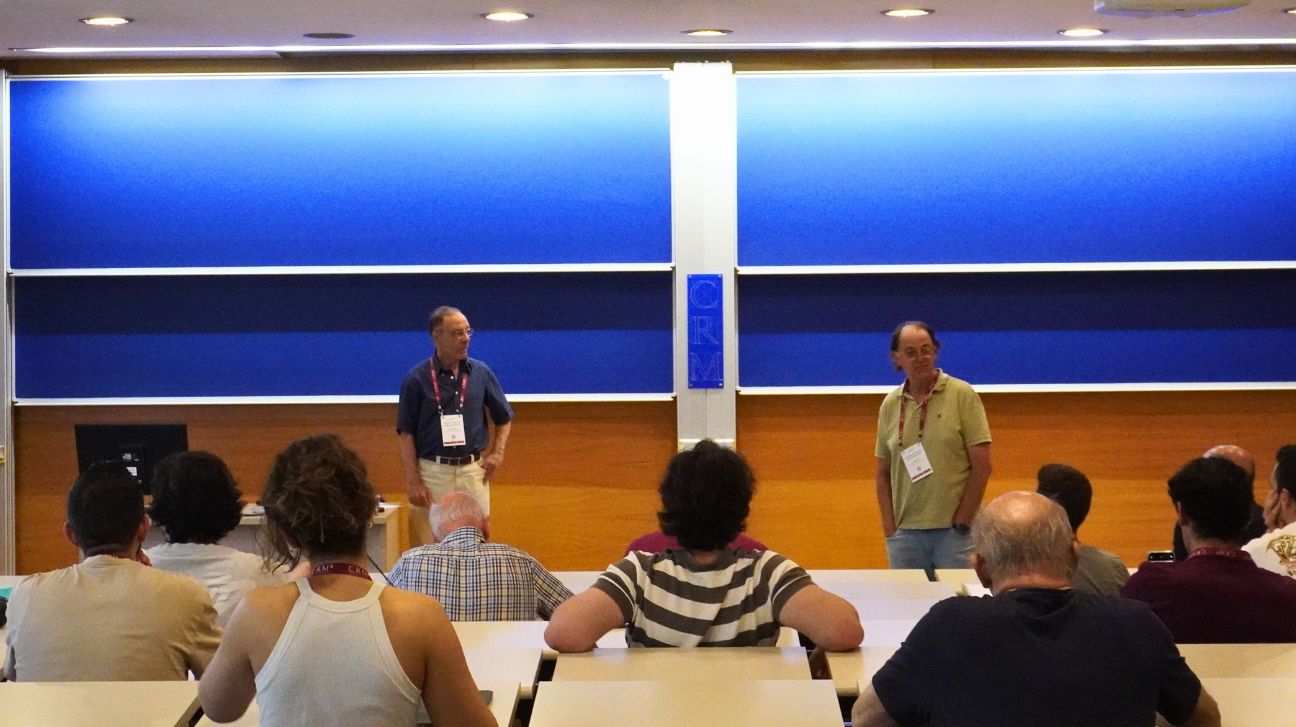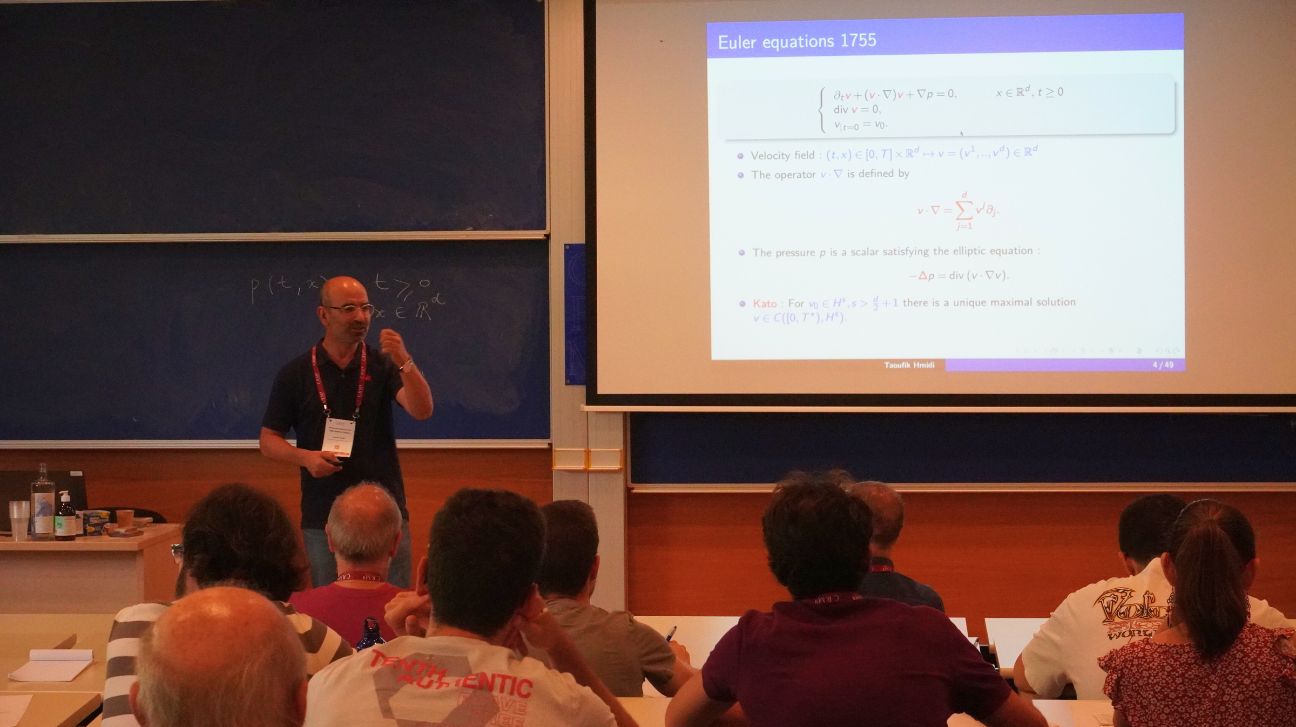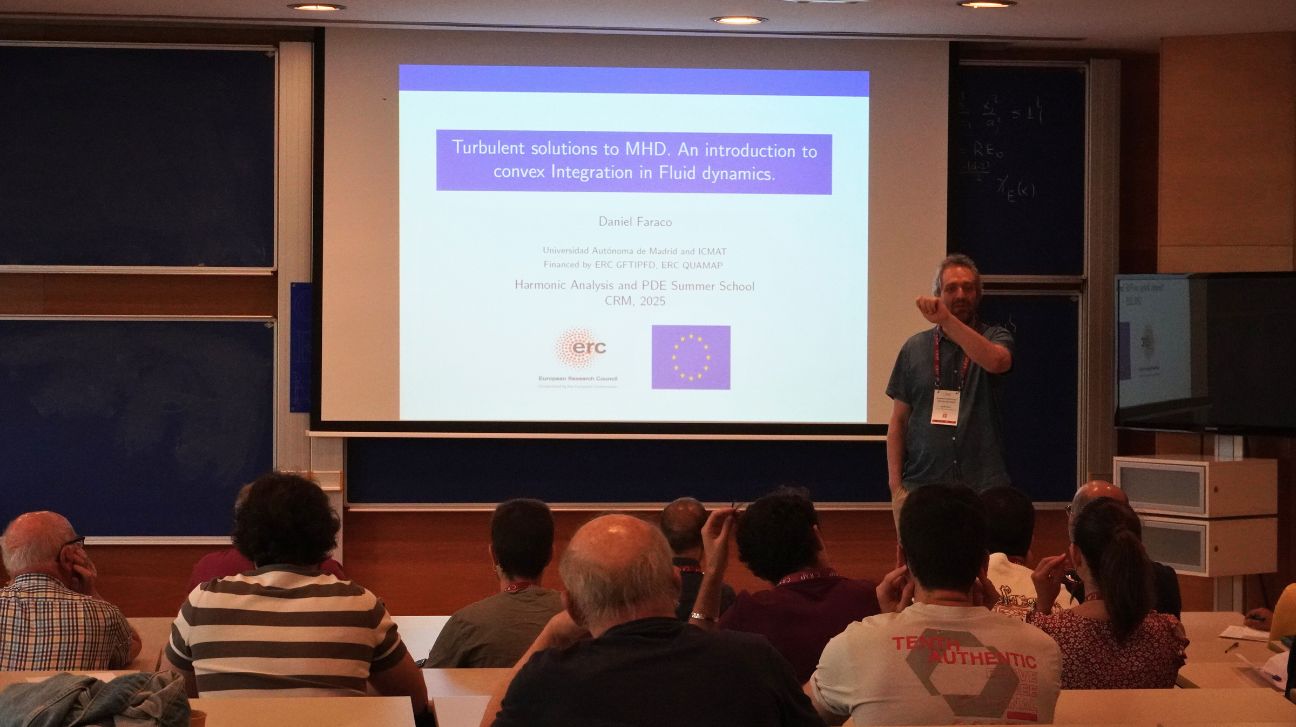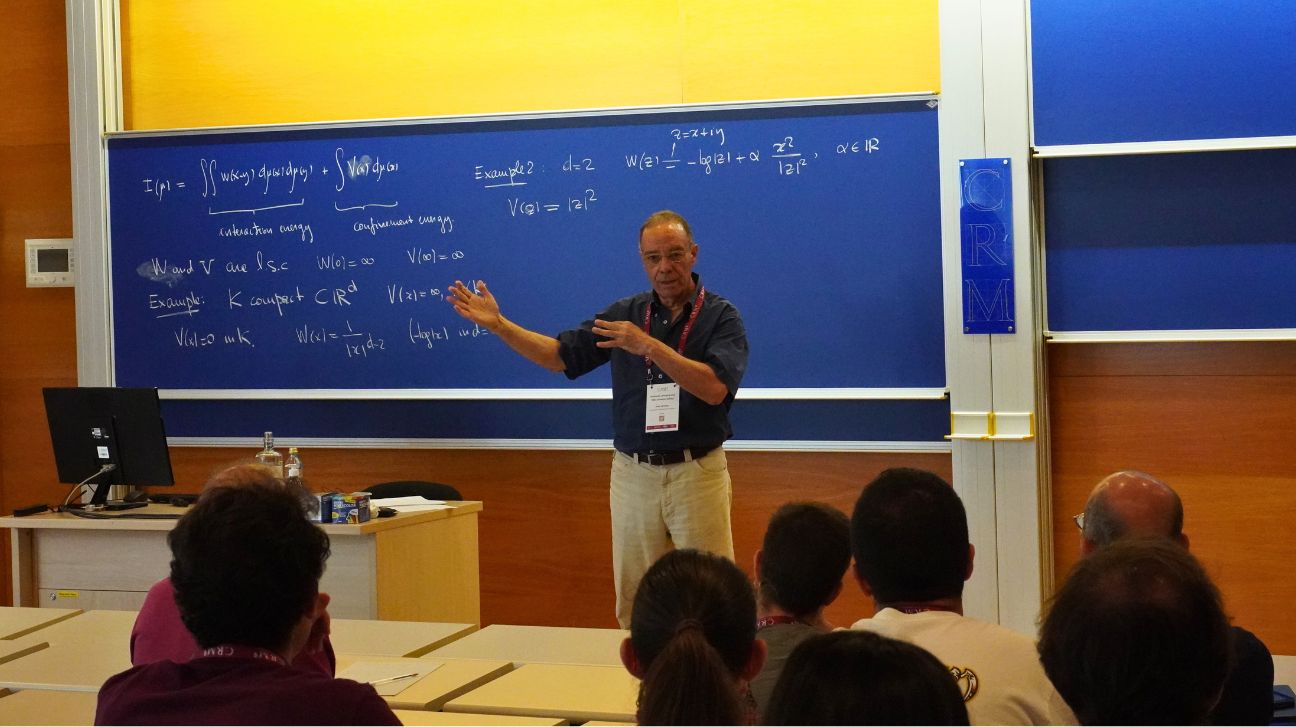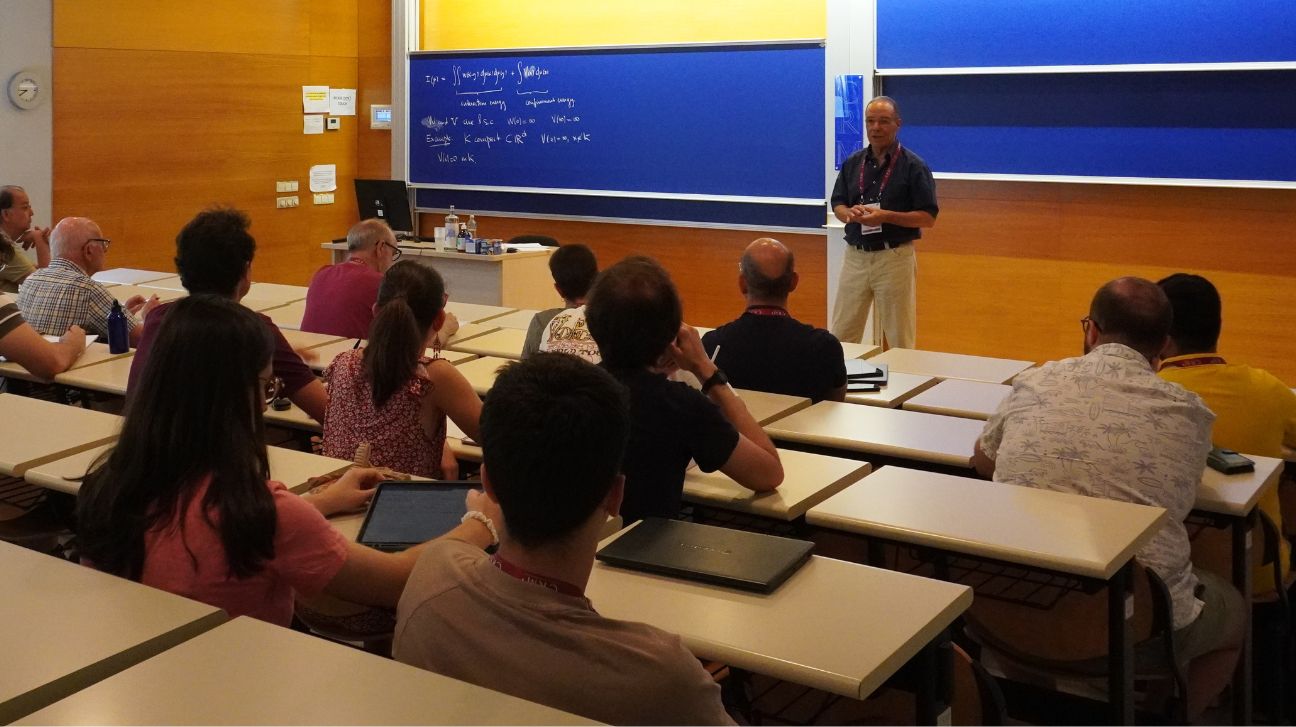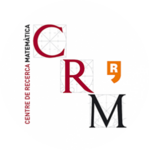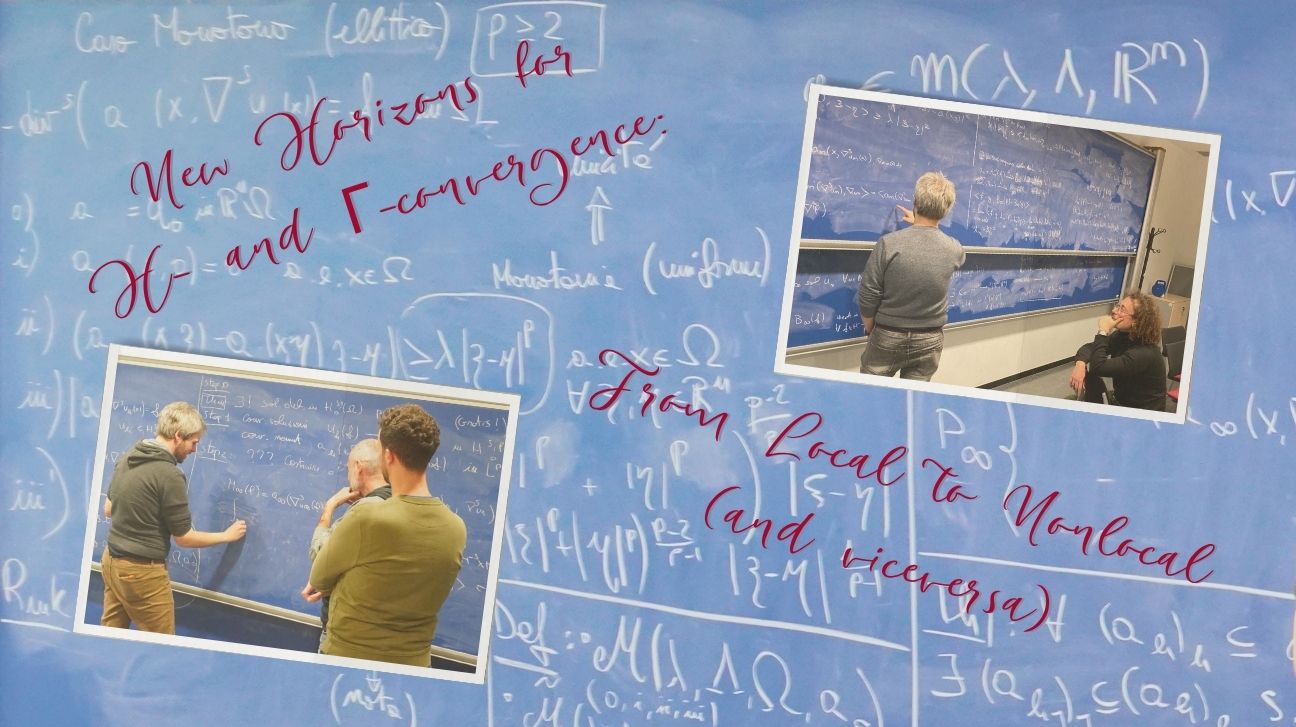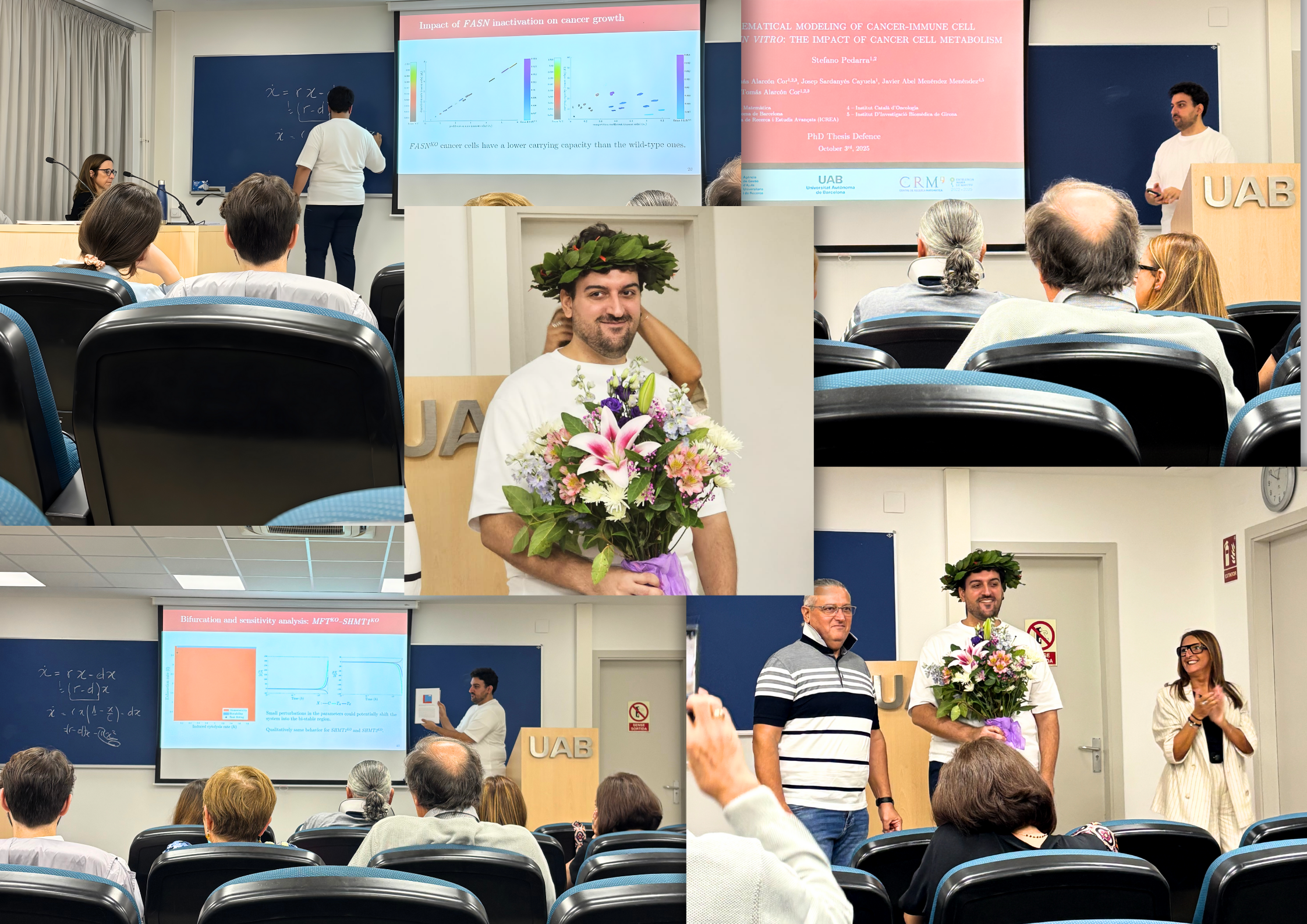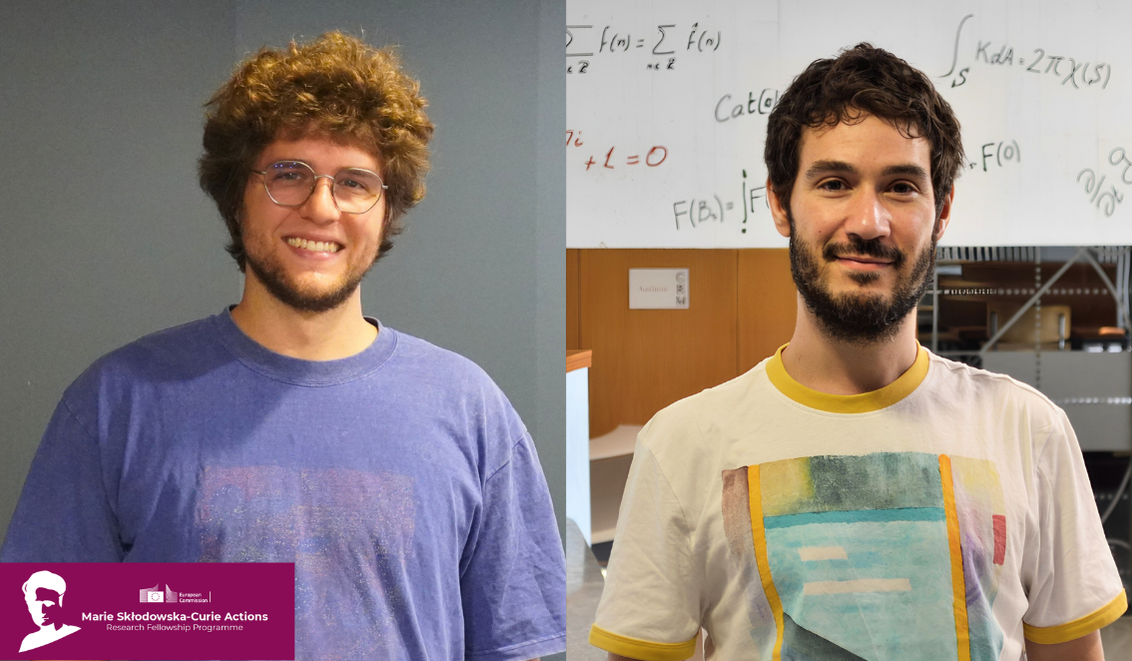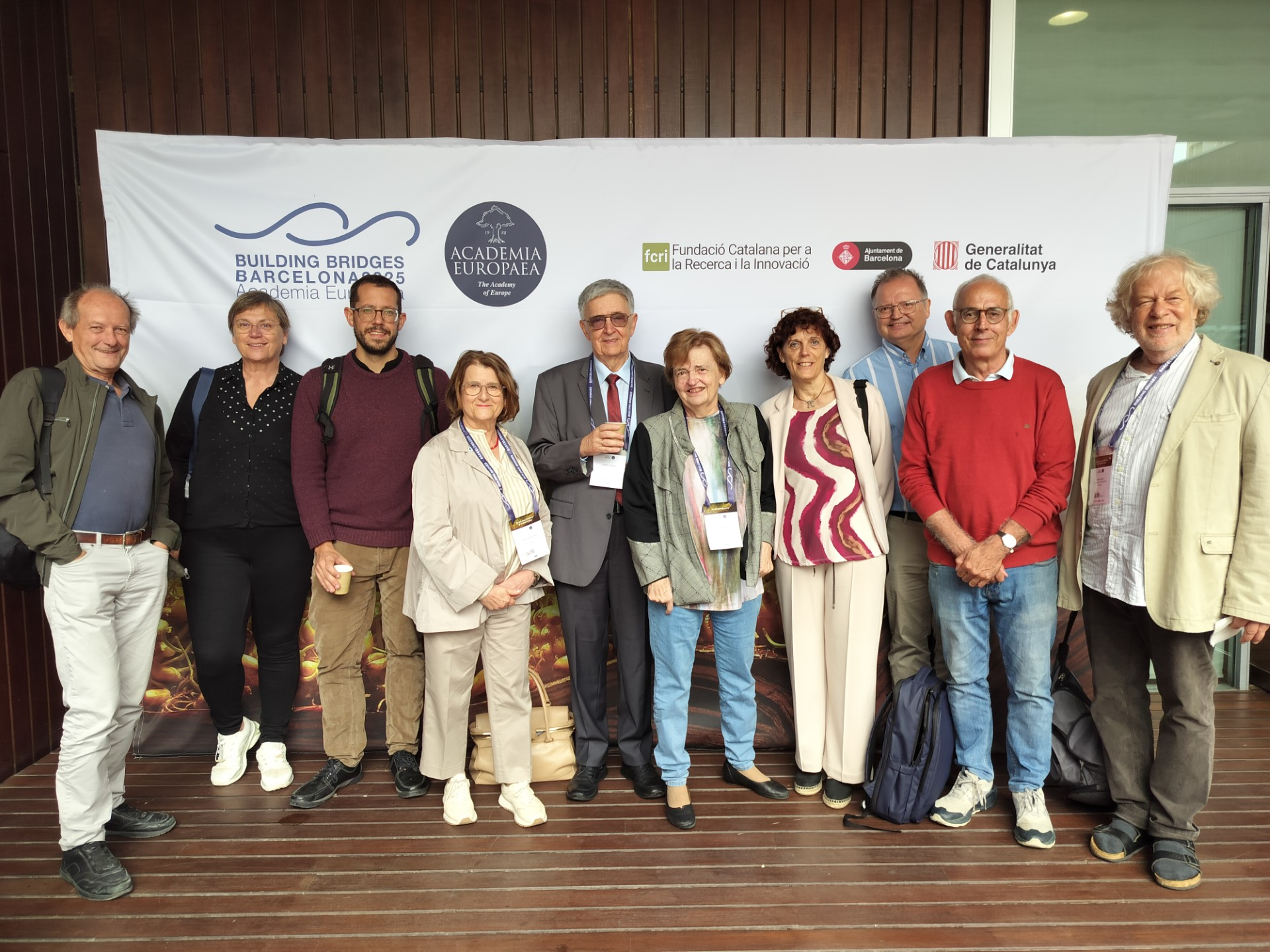
From June 25 to 27, 2025, the Summer School on Harmonic Analysis and PDEs brought together researchers and students for three days of advanced courses and discussion. With lectures by Taoufik Hmidi, Daniel Faraco, and Joan Verdera, the program covered topics like vortex dynamics, convex integration, and non-local energy models—offering a deep dive into modern analysis and its applications.
From June 25 to 27, 2025, the Centre de Recerca Matemàtica (CRM) hosted the Summer School on Harmonic Analysis and PDEs, a three-day advanced training event focused on key topics in modern mathematical analysis. The program explored a wide range of problems, including singular integrals, fluid mechanics, active scalar equations, and the minimization of anisotropic interaction energies. These themes, which lie at the intersection of pure and applied mathematics, have direct relevance to fields such as materials science and biological modeling. The school brought together PhD students, postdoctoral researchers, and international experts to delve into cutting-edge analytical techniques and their applications to real-world phenomena.
Three mini-courses were offered, each led by a distinguished expert.
Taoufik Hmidi, currently at New York University Abu Dhabi, is a leading figure in the study of geophysical fluid dynamics and nonlinear partial differential equations. With a PhD from École Polytechnique in Palaiseau and a previous academic post at Université de Rennes, his research spans vortex dynamics, the formation of relative equilibria in turbulent flows, and the mathematical theory of well-posedness and blow-up phenomena. His work is characterized by a deep analytical approach combined with a strong physical intuition.
In his mini-course, Advances in vortex dynamics via KAM theory, Taoufik Hmidi introduced participants to the fascinating world of vortices—those swirling structures that emerge in turbulent fluids like oceans or the atmosphere. Focusing on recent advances in the study of vortex motion near ordered configurations, he showed how mathematical analysis can uncover the hidden structure behind seemingly chaotic flows. A central theme of the course was how to move beyond idealized point-vortex models by constructing smoother, more realistic structures known as vortex patches. Through examples such as periodic vortex motion and confined flows, Hmidi illustrated how advanced mathematics can bridge the gap between abstract theory and physical reality.
To tackle these problems, he employed two powerful analytical tools. The Kolmogorov–Arnold–Moser (KAM) theory explains how stable, quasi-periodic patterns can persist in complex systems even when they are slightly disturbed. The Nash–Moser iteration scheme, meanwhile, is a refined method for solving equations in situations where standard techniques fail due to a loss of smoothness. Together, these tools allowed Hmidi to construct smooth approximations of singular vortex structures, offering a rigorous yet accessible perspective on how order can emerge within fluid chaos.
Daniel Faraco is a professor of Applied Mathematics at Universidad Autónoma de Madrid and a member of the executive committee of ICMAT. After completing his PhD in Helsinki under Kari Astala, he joined the Max Planck Institute in Leipzig and later became a Ramón y Cajal fellow. His research lies at the intersection of geometric analysis and applied mathematics, with contributions to quasiconformal mappings, inverse problems, nonlinear elasticity, and fluid mechanics. He currently leads the UAM nodes of two major European research projects—Quamap (ERC Advanced Grant) and Agapi (2022–2026)—and heads the Inverse Problems and Mechanics group at UAM.
In his mini-course, Turbulent solutions to Magnetohydrodynamics: An introduction to convex integration in fluid mechanics, Faraco introduced participants to recent developments in convex integration techniques and their applications to magnetohydrodynamics (MHD)—the study of electrically conducting fluids such as plasmas. Convex integration is a mathematical method that allows for the construction of highly irregular, yet valid, solutions to fluid equations—revealing that under certain conditions, fluids can behave in unpredictable or even counterintuitive ways. Originally from geometry, this technique has been adapted to show that equations in fluid dynamics can admit infinitely many “wild” solutions, with implications for understanding turbulence. Over the past 15 years, it has evolved significantly, enabling new insights into complex behaviors in fluid systems. Faraco explored how these ideas interact with key phenomena in MHD, such as plasma relaxation and dynamo theory. Through a structured sequence of sessions, he guided attendees through topics including bounded solutions, magnetic helicity dissipation, and intermittent constructions, offering a compelling view of how abstract mathematical tools can illuminate the turbulent behavior of physical systems.
Joan Verdera is a professor of Mathematical Analysis at the Department of Mathematics at the Universitat Autònoma de Barcelona (UAB), where he has been a faculty member since 1987. He has also served as a visiting professor at the University of California, Los Angeles (UCLA) during the academic years 1983–1984 and 2001–2002. His research interests include complex analysis, harmonic analysis, potential theory, and geometric measure theory. Verdera has made significant contributions to the understanding of analytic capacity and maximal singular integrals, and his recent work explores problems in fluid dynamics using tools from classical analysis.
In his mini-course, Minimizers of some non-local energies, Verdera explored mathematical models that describe how individuals—such as particles or organisms—organize themselves under the influence of both repulsive and confining forces. These models are based on energy functionals defined over probability measures, and key questions include the existence, uniqueness, and structure of minimizers. Verdera presented recent results showing that, under specific conditions—such as quadratic confinement and symmetric, homogeneous interaction kernels with positive Fourier transform away from the origin—the minimizer can be described explicitly. In particular, it takes the form of a measure supported on an ellipsoid, and in the Coulomb (or Newtonian) case, the density is constant. During this course he offered participants a clear example of how abstract mathematical analysis can yield precise and interpretable results in models of collective behavior.
The activity was organized by Joan Mateu, Juan Carlos Cantero, Joan Orobitg, and Joan Verdera, all researchers at the Universitat Autònoma de Barcelona. The school provided an intensive learning environment and a vibrant space for scientific exchange, reinforcing the CRM’s role as a leading center for advanced training in mathematics. Beyond lectures, it served as a meeting point for high-quality mathematical research—an opportunity to share ideas, ask questions, and discover new connections between theory and application. It was an experience that reminded participants that mathematics is not only about solving equations, but also about understanding the world. For a few days, mathematics became not just a discipline, but a living conversation between generations.
“In this summer school on harmonic analysis and PDE’s, three courses have been presented on topics of great interest to our research group. One of them was given by Prof. Taoufik Hmidi on recent and not so recent results in fluid mechanics. A second course was given by Prof. Joan Verdera on minimizers for interaction energies. This topic has become very important during the last decade. The third course, presented by Prof. Daniel Faraco, was perhaps the most novel for us and dealt with the magnetohydrodynamic equation. This equation has been developed lately and proposes an equation related to physical problems involving electric fields and magnetic fields.
The purpose of this summer school was to attract to these courses both established mathematicians and young researchers.” explains Joan Mateu.
|
|
CRM CommNatalia Vallina
|
Xavier Ros-Oton among the 65 most cited mathematicians in the world
ICREA professor at the Universitat de Barcelona and CRM affiliated researcher Xavier Ros-Oton appears on Clarivate's Highly Cited Researchers 2025 list, which this year reinstates the mathematics category after two years of exclusion.Citations are a strange way to...
New Horizons for H- and Γ-convergence: From Local to Nonlocal (and viceversa)
The researchers Maicol Caponi, Alessandro Carbotti, and Alberto Maione extended the H- and Γ-convergence theories to the setting of nonlocal linear operators and their corresponding energies. The authors were able to overcome the limitations of classical localization...
Diego Vidaurre joins the CRM through the ATRAE talent programme
Diego Vidaurre has joined the Centre de Recerca Matemàtica through the ATRAE programme, bringing his expertise in modelling spontaneous brain activity across multiple data modalities. His work focuses on understanding how the brain’s intrinsic dynamics shape...
El CRM a la Setmana de la Ciència: una ruta entre dones, formes i pensament
El CRM va participar en la 30a edició de la Setmana de la Ciència amb una ruta guiada que va combinar les biografies de dones matemàtiques amb obres d'art del centre, connectant ciència, història i creació artística.El 12 de novembre, el Centre de Recerca Matemàtica...
Stefano Pedarra Defends his PhD Thesis on the Interaction between Tumour Cells and the Immune System
Stefano Pedarra has completed his PhD at the Centre de Recerca Matemàtica with a thesis exploring how tumour-cell metabolism shapes the immune system’s ability to fight cancer. His work brought mathematics and biology into direct conversation, from building models to...
Els estudiants participants a la prova de preselecció de Bojos per les Matemàtiques visiten el CRM
La prova de preselecció de Bojos per les Matemàtiques va reunir estudiants de tot Catalunya a la UAB i al CRM, amb presentacions a càrrec de Montse Alsina, presidenta de la Societat Catalana de Matemàtiques, Núria Fagella, degana de la Facultat de Matemàtiques i...
Jordi Mompart highlights the role of artificial intelligence in sport at the XIII GEFENOL-DIFENSC Summer School
The XIII GEFENOL-DIFENSC Summer School gathered over thirty researchers from across Europe to explore how statistical physics helps explain complex phenomena in biology, ecology, networks, and social systems. In his closing lecture, Jordi Mompart (UAB) examined how...
Critical Slowing Down in Genetic Systems: The Impact of Bifurcation Proximity and Noise
An international collaboration including researchers from the Centre de Recerca Matemàtica (CRM) has shown that when several bifurcations occur close to one another, their interaction can dramatically amplify critical slowing down effect - the progressive slowdown of...
Two CRM researchers begin their Marie Skłodowska-Curie fellowships
Gustavo Ferreira and Tássio Naia, CRM postdoctoral researchers and new Marie Skłodowska-Curie fellows. Gustavo Ferreira and Tássio Naia, who joined the CRM in 2023 through the María de Maeztu programme, have started their Marie Skłodowska-Curie postdoctoral...
Matroid Week at CRM: A Collaborative Dive into Combinatorial Geometries
From October 13 to 17, 2025, the CRM hosted Matroid Week, a research school on combinatorial geometries and matroid theory. Courses by Laura Anderson and Geoff Whittle explored intersection properties and structural emergence in matroids. The event fostered deep...
László Lovász receives the 2025 Erasmus Medal in Barcelona
Mathematician László Lovász received the 2025 Erasmus Medal from the Academia Europaea yesterday at the PRBB in Barcelona, where he delivered the lecture “The Beauty of Mathematics”. Renowned for his work in graph theory and discrete mathematics, Lovász has shaped...
Combinatorial Geometry Takes Shape at the CRM
For one week in early October, the Centre de Recerca Matemàtica became a meeting ground for the world of combinatorial geometry. The Polytope Week research school gathered more than fifty participants from three continents to study the interplay...

